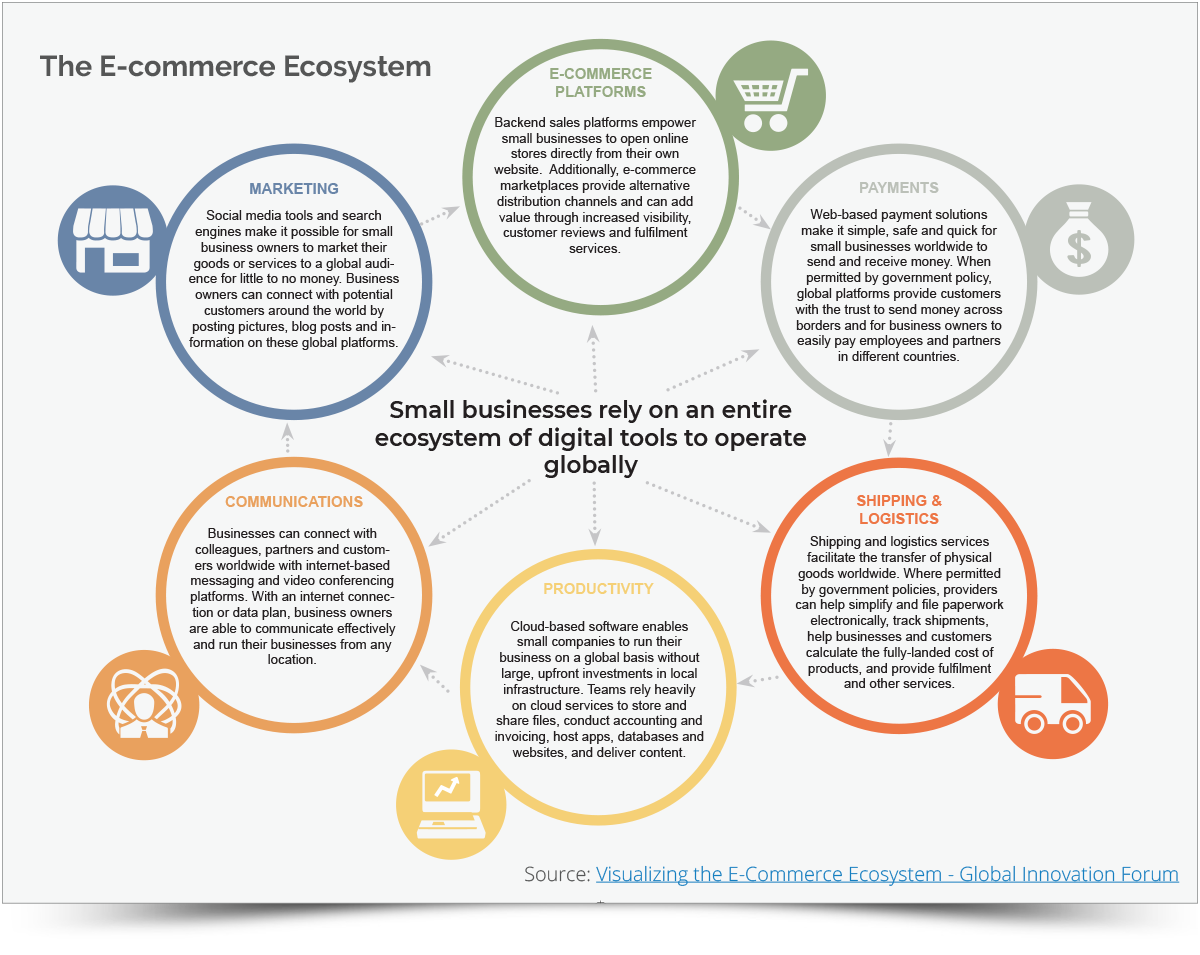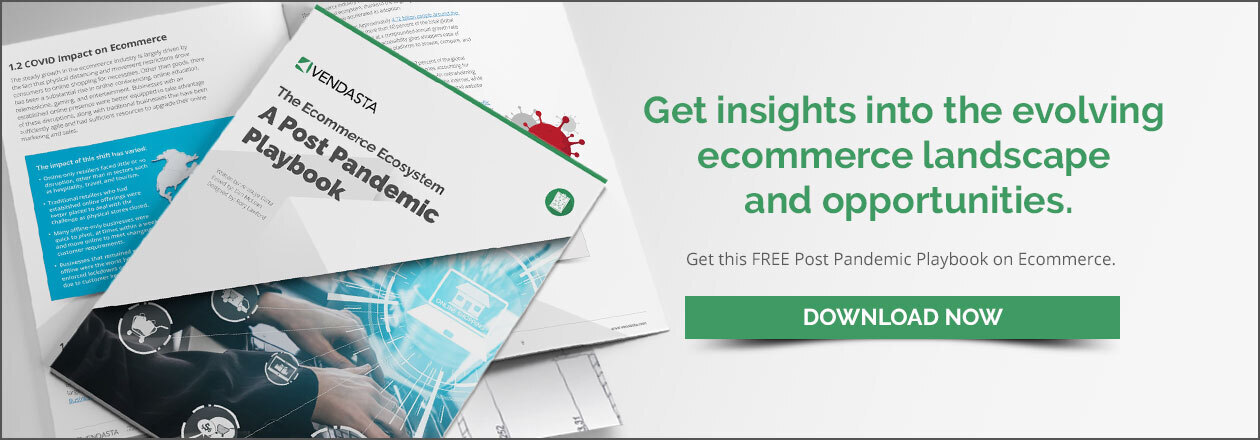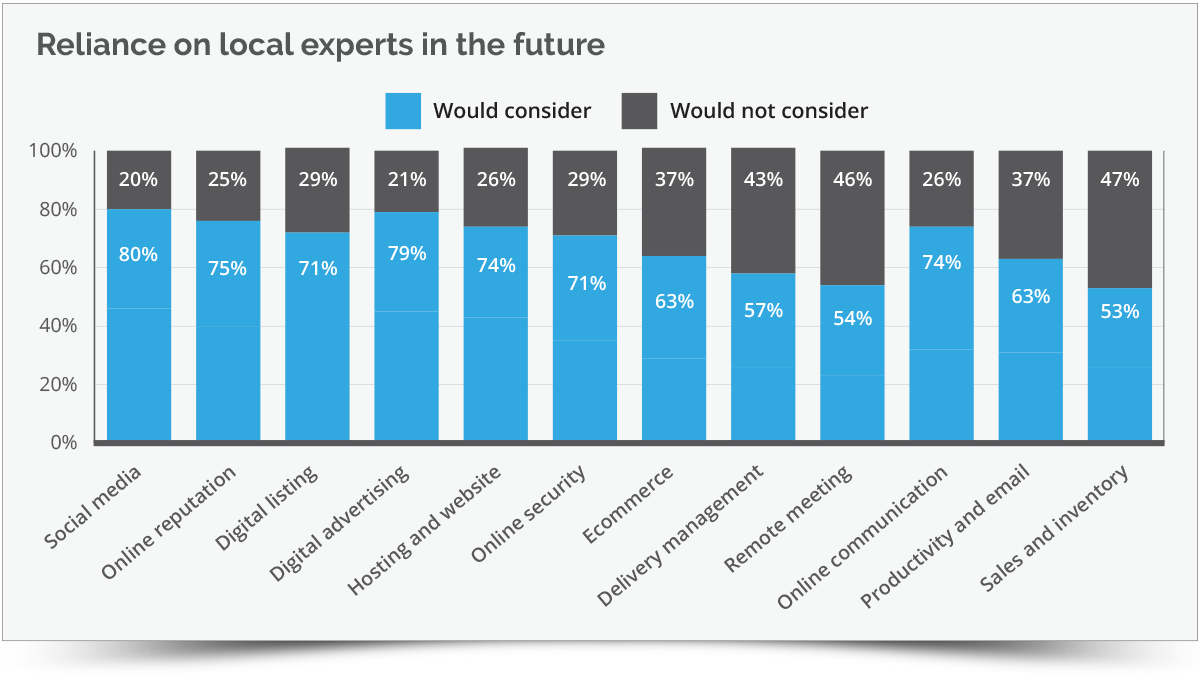Why Small Businesses Need a Well-Defined Ecommerce Strategy
Ecommerce is a complicated ecosystem, and defining a winning strategy could be challenging. For small businesses trying their hands at digital operations for the first time, this can undoubtedly be daunting. However, with customers showing a clear preference for online shopping, drawing up a well-defined ecommerce strategy for SMBs is more important than ever before.
Ecommerce can be broadly defined as buying and selling goods or services via the internet. The ecommerce ecosystem can thus describe the network of services and processes that covers the full cycle of that transaction, which begins with a consumer searching online for a product and ends with receiving final delivery.
This involves a long and complicated chain of processes:
- Consumer accesses the internet
- Searches for the product
- Lands on the ecommerce website
- Selects the product
- Enters their delivery and contact details
- Submits the order
- Makes payment
- Retailer receives the order
- Tracks the product from the inventory
- Or contacts a sub-contractor for the product
- Obtains delivery of the product
- Packages and ships the product order to the consumer
- Consumer receives the product
In many cases, the cycle doesn’t end with delivery, since the consumer may want to post reviews of the product – good or bad – to which the e-tailer must respond to keep a good reputation.
"Ecommerce is an ecosystem. SMBs cannot be successful in an ecommerce world without thinking about their solutions as an ecosystem," says Jeff Tomlin, chief marketing officer, Vendasta.
For small businesses trying their hands in digital operations for the first time, this can undoubtedly be daunting. However, this is where local experts or digital agencies come in. "Agencies must provide an ecosystem to their SMB clients. A typical SMB would have over 30 different type of software that they use to run their businesses – from emails and accounting systems to productivity suites. Increasingly, those solutions need to communicate with each other. The question for agencies is if they are providing their customers an ecosystem, which is really a suite of solutions that talk to each other," says Tomlin.
Tomlin points to the fact that ecommerce adoption was greater in the three months following the onset of the pandemic than it had been during the previous 10 years, as companies of all sizes moved their businesses online. "Now, as we begin to reopen, there are two cohorts – one set of SMBs that didn’t the follow the norm and didn’t adopt ecommerce solutions, and one that quickly adopted digital solutions to run their business online. So, the challenges now are different for the two different sets [of SMBs]. The set that kept playing catch up need a turnkey-type solution that can help them take that leap. For the cohort of businesses who took that leap last year and adopted the right digital tools, the challenge now is to make the solutions work all together. They need to improve on it, refine it, and iterate on it so that they are more effective," he adds.
Agencies must provide an ecosystem to their SMB clients. A typical SMB would have over 30 different type of software that they use to run their businesses – from emails and accounting systems to productivity suites. Increasingly, those solutions need to communicate with each other. The question for agencies is if they are providing their customers an ecosystem, which is really a suite of solutions that talk to each other.
A winning ecommerce strategy
In this complicated ecommerce ecosystem, defining a winning strategy and building the required capabilities is challenging, and more so in a post pandemic world.
Several elements are crucial to draw up such a strategy in a post-pandemic world, but the following factors are key:
- Create a unique online in-store experience for the user
- Omni-channel is here to stay, so look for ways to marry online and offline offerings
- Design supply chain to deliver a smooth omnichannel service
- Focus on connected inventory for seamless delivery
- Leverage technology to drive employee efficiency while improving customer service
- Invest in right ecommerce marketing channels
During an online shopping experience customers usually look for seamless handoffs between different channels and websites, and personalized engagement based on their prior interactions with a brand. An overwhelming majority of customers (70 percent) feel that these connected processes are very important when it comes to winning their business in the competitive ecommerce landscape, according to Salesforce. Therefore, invest in the right platforms and tools.
ALSO READ: 10 Tips for Small Businesses Getting Started with Ecommerce
It is also advisable that businesses run their ecommerce websites with the same attention to detail as they do with their in-store operation. A website just shouldn’t be a place to randomly dump things. The Salesforce survey finds that most customers (69 percent) expect to see new merchandise whenever they visit a site or a store. Therefore, regular inventory updates are a must. Intelligent ecommerce platforms provide opportunities for businesses to aggregate average customer visit frequency and stagger product launches to meet the pace of the highest-value shoppers.
“Businesses that can leverage remote workers, have a SaaS (software-as-a-service) infrastructure, and can sell stuff online, are more nimble and less intimidated by technology are going to be the ones that ultimately survive and thrive,” says Greg Sterling, Vice President of market insights, Uberall.
Ecommerce opportunity for SMBs
In a digital-only world, ecommerce supports efforts to diversify the scope and reach of small businesses. It also plays an increasingly important role in the supply and distribution of both goods and services in domestic markets.
“COVID has created a once-in-a-generation shift in selling behavior. Companies who previously were content to sell in a brick-and-mortar fashion are now required to sell online. And some have found that they could become quite successful in doing so,” says Todd Rowe, former global managing director – customer solutions, Google.
“Their retail website has effectively become their storefront. We see this both as a challenge and an opportunity to shift the way in which small businesses do business,” he adds.
Let’s look at some of the opportunities that ecommerce opens up for SMBs.
Overcome physical barriers
Online stores let businesses connect with customers despite lockdowns or restrictions. An online consumer is not hindered by local regulations around how many people are allowed in a store at a time. As multiple surveys show, people appreciate the convenience of non-physical shopping. This is not entirely due to the fear of the virus. An ecommerce store makes it easier and more convenient for consumers to shop for products while sitting in the comfort of their homes.
Improve customer experience
An ecommerce store gives customers the best of both worlds – the convenience of ordering from home as well as the virtual in-store experience of checkout or trying merchandise while getting advice from customer service representatives. In addition to 24/7 accessibility, an online store has apps that allow customers to examine products and chat with service staff.
Stay level with competitors
Even as lockdown norms ease and physical stores gradually re-open, online stores help local businesses expand their customer bases and compete with local competitors and big businesses like Amazon or Walmart.
Track customers
One of the biggest advantages of ecommerce is its ability to harvest customer data every time someone takes an action. Web analytics tools can track where they come from, which pages they visit, the products they check out and what they buy. These insights can then be used to optimize the online store experience, and target customers with specific offers.
Expand geographic reach
An ecommerce platform removes geographical barriers while allowing small businesses to operate from one location. Local businesses no longer need to rely solely on local customers. With ecommerce, a business is accessible globally, offering the ability to sell nationally, internationally, or to local regulars who can’t make it into the store. The Local Search Association states that 27 percent of consumers turn directly to a business’s website with the intent to make a purchase.
Lower operating costs
For new businesses, it is easier and cheaper to set up an online store compared to huge upfront investments, documentation, licensing, and other logistical requirements needed to open a physical store. Thanks to low-cost platforms and easily available expert services, new entrepreneurs can set up an online store within days, fully equipped with a mobile-friendly website, payment gateway, and tools to manage inventory and shipping. For established businesses, there are tools to integrate sales and inventory management between online and offline stores.
SMBs need help from local experts
Despite the overwhelming challenges posed by the pandemic, SMBs looked to transform by adopting digital technologies and finding new ways to reach and serve customers in local communities, according to the Vendasta State of Local Businesses 2021 survey. Of the local businesses surveyed, 82 percent say they put effort into improving their online presence.
But of course, SMBs can’t do everything on their own. There exists a set of specialists, or local experts, whom SMBs can enlist to provide the right solutions for their fast-changing needs. These local experts include marketing and advertising agencies, independent software vendors (ISV), value added resellers (VARs), managed service providers (MSPs), IT Solution Provider (ITSP), and managed security service providers (MSSPs). There are distinct differences between each of these traditional service providers, but the lines are fast blurring.
The Vendasta survey found that the pandemic drove many businesses to turn to local experts to help them adopt new digital solutions. Key findings include:
- 35 percent of local businesses that did not utilize expert service earlier have relied on them since the pandemic
- 80 percent of respondents would consider looking to local experts in the future to purchase/manage social media marketing tools
- 79 percent would consider local experts for digital advertising
- 76 percent for online reputation
- 71 percent for listing management
Regardless of the exact kind of the services they provide, there has never been a better time to be a local digital marketing and sales expert, providing local businesses with a winning ecommerce strategy and the solutions they need to succeed.
ALSO READ: What is Amara’s Law and How is it Relevant to Ecommerce?
As Accenture notes in its Powering SMB Resiliency in a COVID-19 World, the emphasis for digitally mature SMBs should be to expand their reach through offerings like social listening, 24/7 help desk functions, digital assistants, video chats, tutorials and webinars, and online community groups.
“Where SMBs are concerned, there’s no such thing as a “one size fits all” approach to service. To understand how individual markets are impacted by the pandemic now –and will be in the future –it’s essential for platforms to segment their SMB marketplace using a multi-factorial analysis,” the report notes.
Tomlin says a churn study by Vendasta a few years ago found that there is a 130% increase in customer retention when you are selling four solutions as opposed to selling one standalone solution. "As you provide solutions, you need to make sure that they are talking to one another. For that to happen, you need to bundle them together. Are you providing one login, or are you providing a bunch of logins for different places for different solutions? Do your clients manage their users in one place or a bunch of different places? Can they go to one place to manage all of their customer communications? Providing that ecosystem of solutions is going to the challenge as well as opportunity for agencies in a post-pandemic world," he says.
Conclusion
Defining a winning ecommerce strategy for SMBs is thus critical from a purely survival point of view. “Darwin’s theory of survival of the fittest underlining the natural selection process has become a hot topic since the outbreak. This is not just true when it comes to human health, but also for businesses,” says Paul Plant, co-founder and director, BigFive Digital.
The extent to which trends experienced during the COVID crisis and during the aftermath is uncertain and will depend on the pace of recovery as well as the nature and extent of measures taken to facilitate it. A significant number of consumers are expected to continue spending more – both time and money – online after the crisis now that the entry barriers have been broken. Ecommerce is therefore likely to retain many of the gains in market share that have been made during the pandemic vis-à-vis offline markets, according to UNCTAD forecasts.
Like Plant says, it’s not the biggest companies, it’s not the wealthiest or the strongest that will come out of this successfully. It’s the ones that are able to adapt to change and demands of the situation that will survive in the long run.
To know more about the ecommerce ecosystem and how to create a winning ecommerce strategy, download this FREE playbook.





